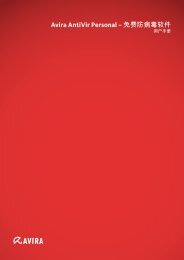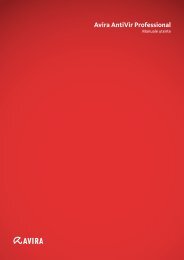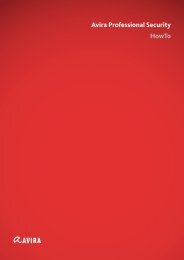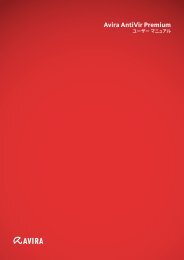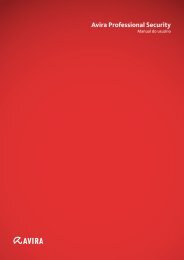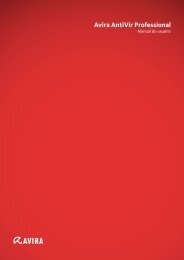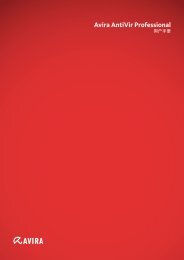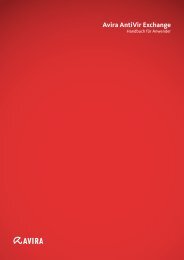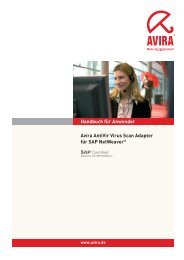User Manual
User Manual
User Manual
You also want an ePaper? Increase the reach of your titles
YUMPU automatically turns print PDFs into web optimized ePapers that Google loves.
Reference: Configuration options<br />
When entering the process, Unicode symbols are accepted. You can therefore enter<br />
process or directory names containing special symbols.<br />
Drive information must be entered as follows: [Drive letter]:\<br />
The colon symbol (:) is only used to specify drives.<br />
When specifying the process, you can use the wildcards * (any number of characters)<br />
and ? (a single character).<br />
C:\Program Files\Application\application.exe<br />
C:\Program Files\Application\applicatio?.exe<br />
C:\Program Files\Application\applic*.exe<br />
C:\Program Files\Application\*.exe<br />
To avoid the process being excluded globally from monitoring by Realtime Protection,<br />
specifications exclusively comprising the following characters are invalid: * (asterisk), ?<br />
(question mark), / (forward slash), \ (backslash), . (dot), : (colon).<br />
You have the option of excluding processes from monitoring by the Realtime<br />
Protection without full path details. For example: application.exe<br />
This however only applies to processes where the executable files are located on hard<br />
disk drives.<br />
Full path details are required for processes where the executable files are located on<br />
connected drives, e.g. network drives. Please note the general information on the<br />
notation of Exceptions on connected network drives.<br />
Do not specify any exceptions for processes where the executable files are located on<br />
dynamic drives. Dynamic drives are used for removable disks, such as CDs, DVDs or<br />
USB sticks.<br />
Warning<br />
Please note that all file accesses done by processes recorded in the list are<br />
excluded from the scan for viruses and unwanted programs!<br />
The button opens a window in which you can select an executable file.<br />
Processes<br />
Add<br />
Delete<br />
The "Processes" button opens the "Process selection" window in which the running<br />
processes are displayed.<br />
With this button, you can add the process entered in the input box to the display<br />
window.<br />
With this button you can delete a selected process from the display window.<br />
Avira Professional Security - <strong>User</strong> <strong>Manual</strong> (Status: 30 Mar. 2012) 109



